Kenneth C. Davis's Blog, page 86
September 15, 2014
Who Said It (9/15/2014)
President George Washington: “Farewell Address” (September 19, 1796)
“Let me now take a more comprehensive view, and warn you in the most solemn manner against the baneful effects of the spirit of party generally.”
Addressed “To the PEOPLE of the UNITED STATES,” Washington’s Farewell was published as a letter in David Claypoole’s American Daily Advertiser, a Philadelphia newspaper. First drafted during Washington’s first term by James Madison, the text was sent to Alexander Hamilton with Washington’s notes added as his second term came to an end and the election of 1796 approached. The final version was written by Hamilton.
Washington and Hamilton biographer Ron Chernow wrote:
“It was not in Hamilton’s headstrong nature to bow to another scribe, and while he would offer Washington a revised version of Madison’s 1792 address, he also forged a magisterial new version of his own.”
Washington: A Life (page 753)
And it is considered, according to the Library of Congress, “one of the most important documents in American history.”
All obstructions to the execution of the laws, all combinations and associations, under whatever plausible character, with the real design to direct, control, counteract, or awe the regular deliberation and action of the constituted authorities, are destructive of this fundamental principle and of fatal tendency. They serve to organize faction; to give it an artificial and extraordinary force; to put in the place of the delegated will of the nation the will of a party, often a small but artful and enterprising minority of the community, and, according to the alternate triumphs of different parties, to snake the public administration the mirror of the ill-concerted and incongruous projects of faction rather than the organ of consistent and wholesome plans, digested by common counsels and modified by mutual interests.
However combinations or associations of the above description may now and then answer popular ends, they are likely in the course of time and things to become potent engines by which cunning, ambitious, and unprincipled men will be enabled to subvert the power of the people, and to usurp for themselves the reins of government, destroying. afterwards the very engines which have lifted them to unjust dominion.
Toward the preservation of your Government and the permanency of your present happy state, it is requisite not only that you steadily discountenance irregular oppositions to its acknowledged authority, but also that you resist with care the spirit of innovation upon its principles, however specious the pretexts. One method of assault may be to effect in the forms of the Constitution alterations which will impair the energy of the system, and thus to undermine what can not be directly overthrown. In all the changes to which you may be invited remember that time and habit are at least as necessary to fix the true character of governments as of other human institutions; that experience is the surest standard by which to test the real tendency of the existing constitution of a country; that facility in changes upon the credit of mere hypothesis and opinion exposes to perpetual change, from the endless variety of hypothesis and opinion; and remember especially that for the efficient management of your common interests in a country so extensive as ours a government of as much vigor as is consistent with the perfect security of liberty is indispensable. Liberty itself will find in such a government, with powers properly distributed and adjusted, its surest guardian. It is, indeed, little else than a name where the government is too feeble to withstand the enterprises of faction, to confine each member of the society within the limits prescribed by the laws, and to maintain all in the secure and tranquil enjoyment of the rights of person and property.
I have already intimated to you the danger of parties in the State, with particular reference to the founding of them on geographical discriminations. Let me now take a more comprehensive view, and warn you in the most solemn manner against the baneful effects of the spirit of party generally.
This spirit, unfortunately, is inseparable from our nature, having its root in the strongest passions of the human mind. It exists under different shapes in all governments, more or less stifled, controlled, or repressed; but in those of the popular form it is seen in its greatest rankness and is truly their worst enemy.
Source and Complete Text: George Washington: “Farewell Address,” September 19, 1796. Online by Gerhard Peters and John T. Woolley, The American Presidency Project.
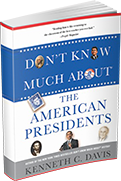
Don’t Know Much About® the American Presidents (Hachette Paperback-April 15, 2014)
September 12, 2014
Friday Pop Quiz: What was Francis Scott Key’s profession?
Answer: Attorney
On September 13, 1814, Key was on a British ship as Fort McHenry in Baltimore harbor, was bombarded by the attacking British. Key was negotiating a prisoner exchange with the British forces. When the day dawned, he saw the flag flying above the fort and was inspired to write the lines that later became the National Anthem. You can get the complete story in this video blog a Don’t Know Much About® Field Trip.
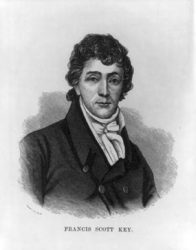
Francis Scott Key (Image Source: National Park Service)
Francis Scott Key was born on August 1, 1779, in western Maryland. His family was very wealthy and owned an estate called “Terra Rubra.” When Francis was 10 years old, his parents sent him to grammar school in Annapolis. After graduating at the age of 17, he began to study law in Annapolis while working with his uncle’s law firm. By 1805, he had a well-established law practice of his own in Georgetown, a surburb of Washington, D.C. By 1814, he had appeared many times before the Supreme Court, and had been appointed the United States District Attorney.
Source: National Park Service/Fort McHenry National Monument and Historic Shrine
September 11, 2014
Don’t Know Much About® Field Trip: the National Anthem
(Video shot, edited and produced by Colin Davis)
Two hundred years ago, Francis Scott Key penned the words that later became the national anthem. This video is from my 2009 field trip to Fort McHenry.
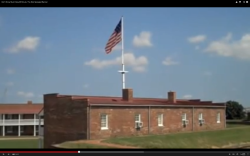
Fort McHenry-Baltimore Harbor (Video frame by Colin Davis)
It was September 13, 1814. America was at war with England for the second time since 1776. Francis Scott Key was an attorney attempting to negotiate the return of a civilian prisoner held by the British who had just burned Washington DC and had set their sights on Baltimore. As the British attacked the city, Key watched the naval bombardment from a ship in Baltimore’s harbor. In the morning, he could see that the Stars and Stripes still flew over Fort McHenry. Inspired, he wrote the lyrics that we all know –well some of you know some of them.
But here’s what they didn’t tell you:
•Yes, Washington, D.C. was burned in 1814, including the President’s Home which would later get a fresh coat of paint and be called the “White House.” But Washington was torched in retaliation for the burning of York –now Toronto—in Canada earlier in the war.
•Yes, Key wrote words. But the music comes from an old English drinking song. Good thing it wasn’t 99 Bottles of Beer on the Wall.Here’s a link to the original lyrics of that drinking song To Anacreon in Heaven via Poem of the Week.
•The Star Spangled Banner did not become the national anthem until 1916 when President Wilson declared it by Executive Order. But that didn’t really count. Finally, in 1931, it became the National Anthem by Congressional resolution signed by President Herbert Hoover, on March 3.
Now, here are a couple of footnotes to the Francis Scott Key story—his son, Philip Barton Key, was a District Attorney in Washington. DC. He was shot and killed by Congressman Daniel Sickles. Sickles was acquitted with the first use of the defense of temporary insanity in 1859. And went on to serve as a Civil War general –and not a very good one.
And speaking of the Civil War, Key’s grandson was later imprisoned in Fort McHenry along with Baltimore’s Mayor and other pro-Confederate sympathizers.
Here are some places to learn more about Fort McHenry, Francis Scott Key and the Flag that inspired the National Anthem: Fort McHenry National Monument and Historic Shrine
The images and music in this video are courtesy of the Smithsonian Museum of American History
This version of the anthem in the video is performed on 19th century instruments also courtesy of the Smithsonian Museum.
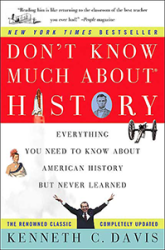
Don’t Know Much About® History: Anniversary Edition (Harper Perennial and Random House Audio)
September 8, 2014
Who Said It? (9/8/2014)
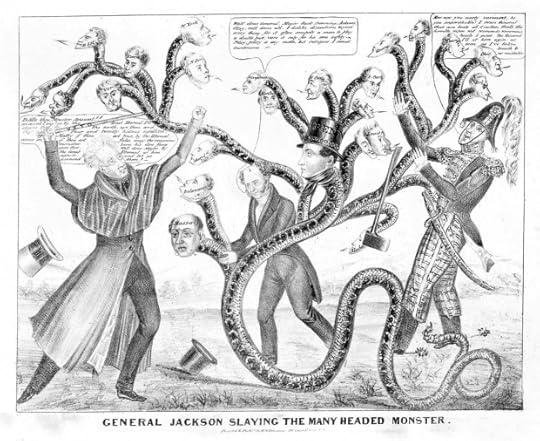
General Jackson Slaying the Many Headed Monster (Source: Library of Congress; HarpWeek.com)
Answer: Andrew Jackson, “Veto Message Regarding the Bank of the United States” (July 10, 1832)
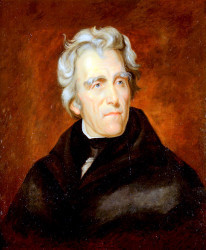
Andrew Jackson (1825) by Thomas Sully (Source: US Senate)
On September 10, 1833, Jackson announced that the federal government would no longer use the Second Bank of the United States and then used his executive power to remove all federal funds from the bank, depositing them instead in state banks –known as “pet banks.”
It is to be regretted that the rich and powerful too often bend the acts of government to their selfish purposes. Distinctions in society will always exist under every just government. Equality of talents, of education, or of wealth can not be produced by human institutions. In the full enjoyment of the gifts of Heaven and the fruits of superior industry, economy, and virtue, every man is equally entitled to protection by law; but when the laws undertake to add to these natural and just advantages artificial distinctions, to grant titles, gratuities, and exclusive privileges, to make the rich richer and the potent more powerful, the humble members of society-the farmers, mechanics, and laborers-who have neither the time nor the means of securing like favors to themselves, have a right to complain of the injustice of their Government. There are no necessary evils in government. Its evils exist only in its abuses. If it would confine itself to equal protection, and, as Heaven does its rains, shower its favors alike on the high and the low, the rich and the poor, it would be an unqualified blessing. In the act before me there seems to be a wide and unnecessary departure from these just principles.
Source: Avalon Project-Yale Law School Complete Text of President Jackson’s Veto Message (July 10, 1832)
Read “King Andrew and the Bank” by Daniel Feller in Humanities magazine (January-February 2008)
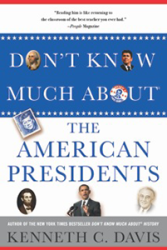
Don’t Know Much About® the American Presidents (Hachette paperback)
September 5, 2014
Friday Pop Quiz: Who was the first U.S. President to win the Nobel Peace Prize?
Answer: Theodore Roosevelt
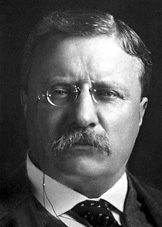
Theodore Roosevelt (Photo Source: NobelPrize.org)
In 1905, President Roosevelt invited envoys of Russia and Japan to Portsmouth New Hampshire to negotiate an end to the war between the two countries. The treaty was signed on September 5, 1905 and Roosevelt received the Nobel Peace Prize in 1906.
Read Roosevelt’s Nobel Prize biography and Nobel Prize acceptance speech.
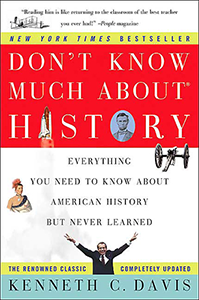
Don’t Know Much About® History: Anniversary Edition (Harper Perennial and Random House Audio)
September 1, 2014
Why Labor Day? Check out this Ted-Ed animated video
“Why do Americans and Canadians Celebrate Labor Day?”
This new Ted-Edd animated video explains the history of the holiday and why it still matters today.
You can also view it on YouTube:
Read more about the period of labor unrest in Don’t Know Much About® History.
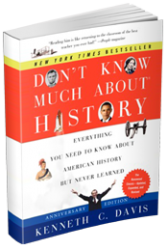
Don’t Know Much About History (Revised, Expanded and Updated Edition)
August 31, 2014
Who Said It? (8/31/2014-Labor Day edition)

Abraham Lincoln (November 1863) Photo by Alexander Gardner
Abraham Lincoln, “First Annual Message to Congress” (“State of the Union”) December 3, 1861
It is not needed nor fitting here that a general argument should be made in favor of popular institutions, but there is one point, with its connections, not so hackneyed as most others, to which I ask a brief attention. It is the effort to place capital on an equal footing with, if not above, labor in the structure of government. It is assumed that labor is available only in connection with capital; that nobody labors unless somebody else, owning capital, somehow by the use of it induces him to labor. This assumed, it is next considered whether it is best that capital shall hire laborers, and thus induce them to work by their own consent, or buy them and drive them to it without their consent. Having proceeded so far, it is naturally concluded that all laborers are either hired laborers or what we call slaves. And further, it is assumed that whoever is once a hired laborer is fixed in that condition for life.
Now there is no such relation between capital and labor as assumed, nor is there any such thing as a free man being fixed for life in the condition of a hired laborer. Both these assumptions are false, and all inferences from them are groundless.
Labor is prior to and independent of capital. Capital is only the fruit of labor, and could never have existed if labor had not first existed. Labor is the superior of capital, and deserves much the higher consideration. Capital has its rights, which are as worthy of protection as any other rights.
Source and Complete text: Abraham Lincoln: “First Annual Message,” December 3, 1861. Online by Gerhard Peters and John T. Woolley, The American Presidency Project.
Read more about Lincoln, his life and administration and the Civil War in Don’t Know Much About® History, Don’t Know Much About® the Civil War and Don’t Know Much About® the American Presidents
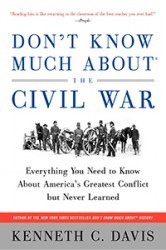
Don’t Know Much About the Civil War (Harper paperback, Random House Audio)

Don’t Know Much About® History: Anniversary Edition (Harper Perennial and Random House Audio)

Don’t Know Much About® the American Presidents (Hyperion Paperback-April 15, 2014)
August 29, 2014
Pop Quiz: What Union general freed the slaves in Missouri in 1861?
Answer; John Charles Frémont (1813-1890)
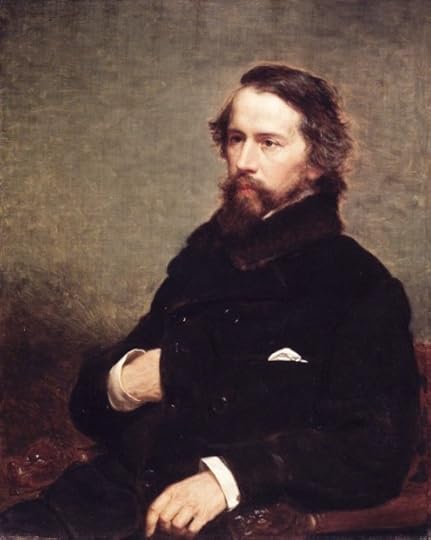
General John Charles Frémont circa 1857 by Charles Loring Elliot (Image Courtesy of Brooklyn Museum
On August 30, 1861, General Frémont issued an order that declared Missuori under martial law and freed slaves in the state. President Lincoln was not pleased and ordered Frémont to rescind the order.
“In August 1861, Congress authorized the confiscation of slaves used to aid the rebellion in the First Confiscation Act. On the 30th of that month, Union General Fremont issued a proclamation freeing all slaves in Missouri that belonged to secessionists. In a, Lincoln ordered Fremont to change his proclamation to conform to the First Confiscation Act. The letter was widely published in the newspapers, and Lincoln received many letters condemning his decision and expressing support for Fremont.”
Source: Library of Congress
Read Lincoln’s response to Frémont here.
Once one of America’s most famous men, Frémont was known as the “Pathfinder,” for helping chart the way west to California.During the Mexican War, he helped establish California as a republic and then was its military governor and later first U.S. Senator, Married to Jessie Benton, the daughter of one of the Senate’s most powerful men, Thomas Hart Benton of Missouri, he became the first Republican candidate for president in 1856. When the war broke out, he was named a Major General and in August, issued his controversial edict.
Read more about the Frémonts and their extraordinary lives in A Nation Rising.
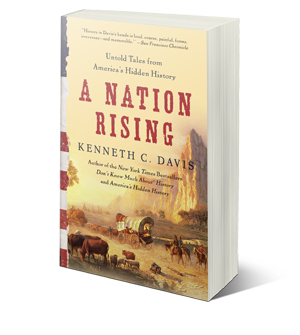
August 22, 2014
Pop Quiz: Who was the first member of Congress to enlist after Pearl Harbor?
Answer: Lyndon B. Johnson, who joined the Navy immediately after the Pearl Harbor attack.

Lyndon B. Johnson (March 1964)
(Photo: Arnold Newman, White House Press Office)
“When the United States entered World War II, Johnson became the first member of Congress to enlist in the armed services, becoming a lieutenant commander in the Navy. His military service abruptly ended, however, when President Roosevelt ordered that members of Congress choose between serving in uniform or in Congress. Johnson resigned his active commission and returned to Capitol Hill.”
Source: United States Senate Historical Office

Lyndon B. Johnson as Navy Commander-December 1941 (Photo Credit: LBJ Library and Museum)
Lyndon. B. Johnson was born on August 27, 1908.
Eight future presidents served during World War II. The others are: Eisenhower, Kennedy, Nixon, Ford, Reagan and George H.W. Bush. Jimmy Carter was at the Naval Academy during the war, graduating in 1946.
Read more about Johnson’s life and administration in Don’t Know Much About History and Don’t Know Much About the American Presidents.

Don’t Know Much About® the American Presidents (Hyperion Paperback-April 15, 2014)

Don’t Know Much About® History: Anniversary Edition (Harper Perennial and Random House Audio)
June 25, 2014
Whatever Became Of…56 Signers? (3d in series)
…We mutually pledge to each other our Lives, our Fortunes , and our Sacred Honor.
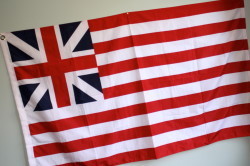
The Grand Flag of the Union, first raised in 1775 and by George Washington in early 1776 in Boston. The Stars and Stripes did not become the “American flag” until June 14, 1777. (Author photo © Kenneth C. Davis)
Part 3 of a series of posts about the fates of the signers of the Declaration of Independence. A printer, a politician, a duelist, a Connecticut Yankee and the most famous signature in U.S. history. The next five in alphabetical order:
-Benjamin Franklin (Pennsylvania) America’s most famous man in 1776, Franklin was 70 years old at the time of the signing. Printer, publisher, writer, scientist, diplomat, philosopher –he was the embodiment of the Enlightenment ideal. A member of the draft committee that produced the Declaration, Franklin was a central figure in the independence vote and then helped the war effort by winning crucial French support for the America cause. But he lost no Fortune, reportedly tripling his wealth during the conflict. Franklin returned to the scene of the Declaration’s passage in 1787 to help draft the Constitution.. When he died at age 84 in 1790, his funeral was attended by a crowd equal to Philadelphia’s population at the time. Read more on Franklin at this National Park Service site.
-Elbridge Gerry (Massachusetts) A 32 year old merchant from Marblehead, Gerry (pronounced with a hard G like Gary) is much more famous for later dividing Massachusetts into oddly-shaped voting districts as the state’s governor. A cartoonist compared the districts to a salamander and the word “gerry-mandering” was born. Though he voted for independence, Gerry was not present to sign in August, signing later in the fall of 1776, He profited from the war and later joined the Massachusetts delegation to the Constitutional convention in 1787, although he refused to sign the Constitution. He became James Madison’s second vice president in 1812, but died in office in 1814 at age 70.
-Button Gwinnett (Georgia) An English-born plantation owner and merchant, he was 41 at the time of the signing. And didn’t last much longer. A political argument with a Georgia general led to a duel in which Gwinnett was mortally wounded. He died in 1777 at age 42, the second of the signers to die. (John Morton of Pennsylvania was first.)
-Lyman Hall ( Georgia) A Connecticut Yankee physician transplanted to Georgia plantation owner, Hall was 52 years old at the signing. A vocal patriot when Georgia was far more hesitant about independence, he first came to Philadelphia s a nonvoting delegate. Hall’s plantation was destroyed during the war when the British made their punishing attacks on the South. He later served as Georgia’s governor, dying at age 66 in 1790.
-John Hancock (Massachusetts) Born into a poor parson’s family in Lexington (National Parks Service site) , Hancock was sent o live with a wealthy uncle when his father died. He inherited his uncle’s shipping business and was one of America’s wealthiest men by the time he was thirty. A patriot leader in Boston, it was Hancock and Samuel Adams who the British sought to capture on that April 1775 night when the war began. President of the Continental Congress when independence was declared, he was 39 at the time of the signing. The outsized signature on the document cemented his fame in American lore. After the war Hancock was governor of Massachusetts at the time of his death in 1793 at age 56.
Longer sketches of these signers can be found at this National Park Service site.

Don’t Know Much About® History: Anniversary Edition (Harper Perennial and Random House Audio)
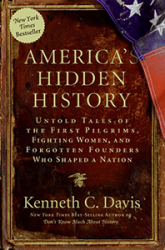
America’s Hidden History, includes tales of “Forgotten Founders”

Don’t Know Much About® the American Presidents (Hyperion Paperback-April 15, 2014)



